In a place as wild and beautiful as Antarctica, the highlights are many. For us though, it was our Antarctic wildlife encounters that left one of the most lasting impressions.
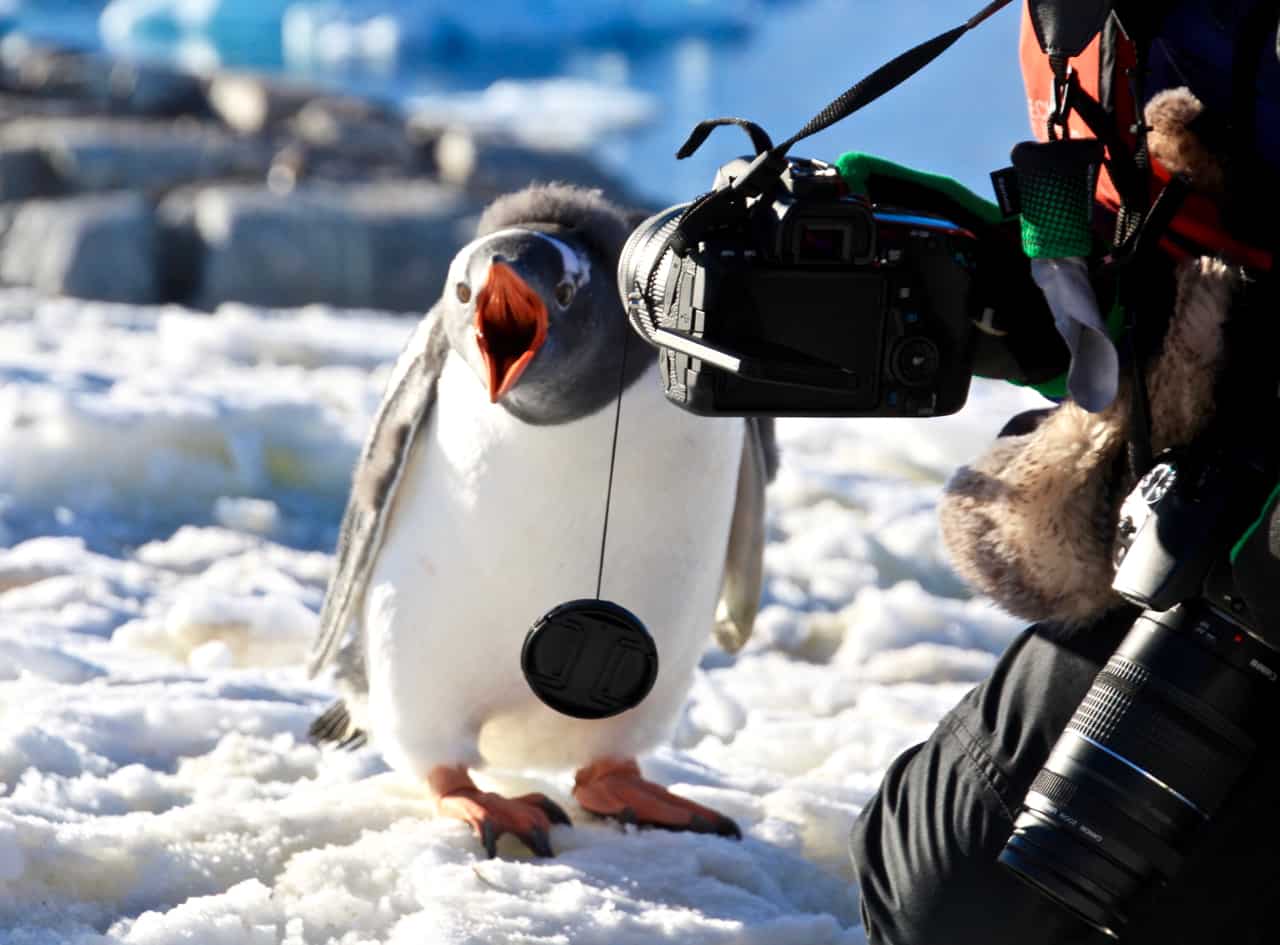
Magnificent, cute, playful, regal, determined, hardy, sometimes fearsome, ever tenacious are just some of the diverse words that come to mind when thinking about Antarctic wildlife.
In many cases hunted to near extinction, and surviving in one of the harshest environments in the world, the animals of Antarctica are nothing if not resilient.
In this post, we’ve put together a profile of some of the amazing Antarctic wildlife you’ll encounter on an expedition cruise to the great icy continent.
Have A Whale Of A Time
Expeditions to Antarctica take place during the austral summer, from November to March, which is when humpback whales are also in town for their annual Antarctic food festival. So chances are good that you’ll see a whale or two. Especially if you visit later in the season.
We visited Antarctica in March and our encounters with these graceful titans ranged from almost constant sightings of their aptly called ‘bushy blow’ in the distance, to whales escorting our ship during navigation, curious visits while we were at anchor, and the occasional rendezvous on zodiac boat trips.
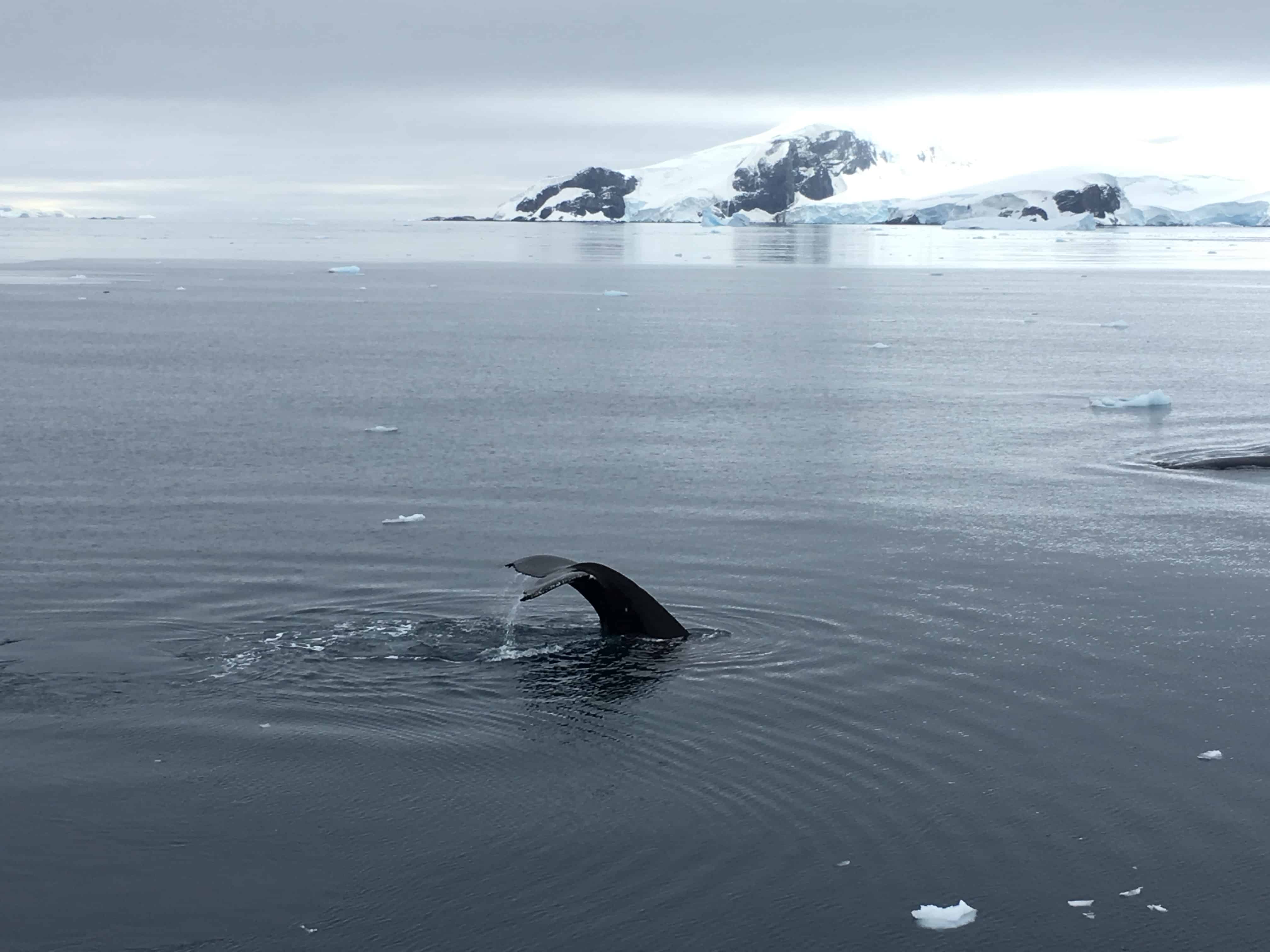
Every whale encounter we had during our 10-day trip to Antarctica was a thrill, but one particular meet-up proved a high-water mark of the expedition.
One afternoon, while anchored at Cierva Cove on the Antarctic Peninsula, two very large and inquisitive humpbacks spent about an hour with us, chilling alongside the ship to a chorus of appreciation from the captivated audience on deck. Occasionally, they’d wave their huge pectoral fins or spy hop for a better look at us.
What a sight we must have appeared to them: 80-odd humans bundled up in high-viz polar gear, falling over each other in a bid to find the perfect vantage point for this unforgettable social call.
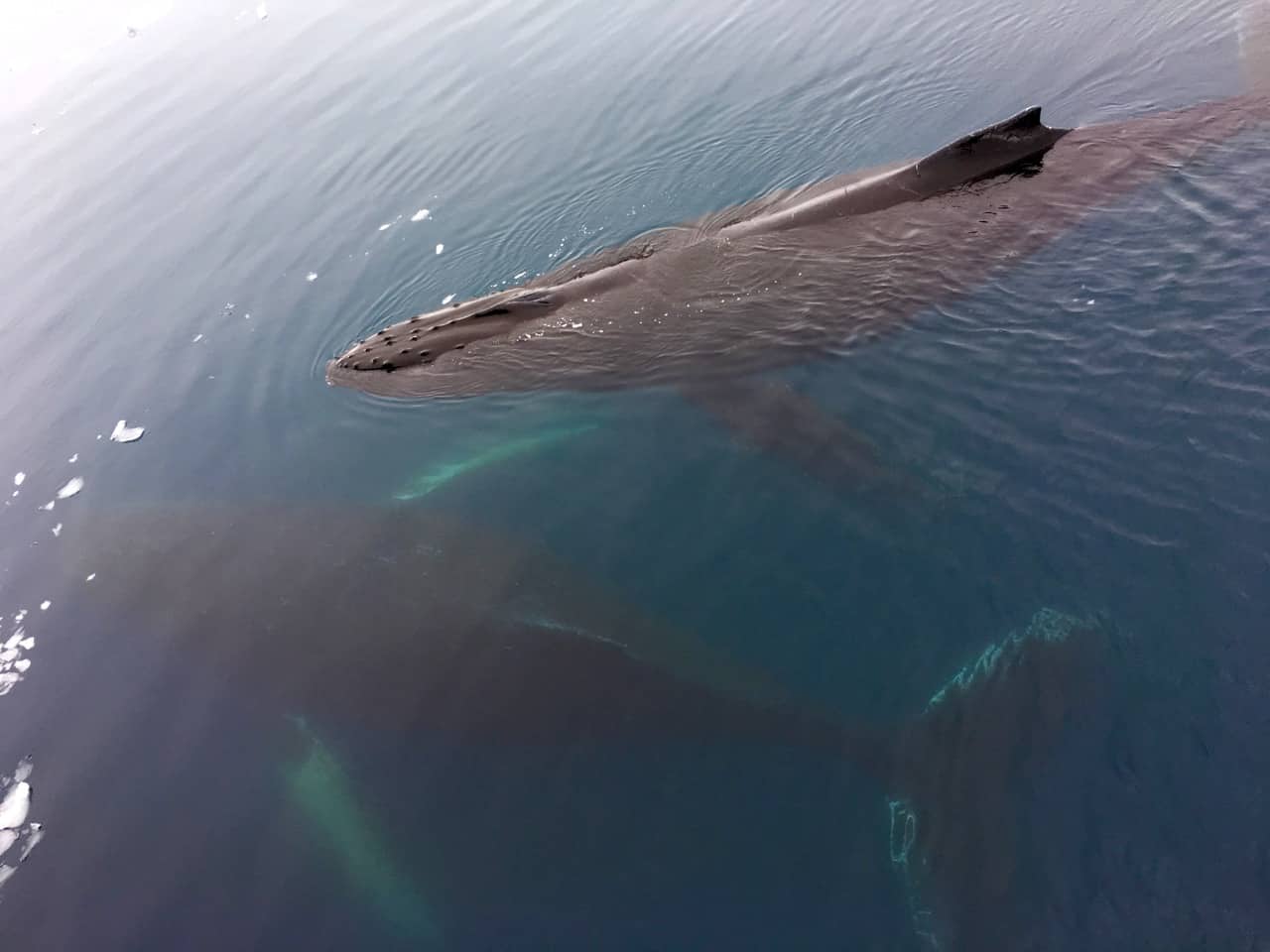
Beginning in the early 1900s, whaling in Antarctica went on to decimate local whale populations, along with other Antarctic wildlife like fur seals. Today the derelict ruins of whaling stations, boats and factory ships litter bays and shores throughout the Antarctic Peninsula alongside piles of whale bones, a tragic reminder of this dark past.
Whaling bans in the 1960s combined with global conservation efforts have helped support the recovery of whale numbers though. Today up to 60,000 humpbacks are thought to spend their summer months in Antarctic waters: great news for the species, and for visitors hoping for a glimpse of these gentle leviathans.
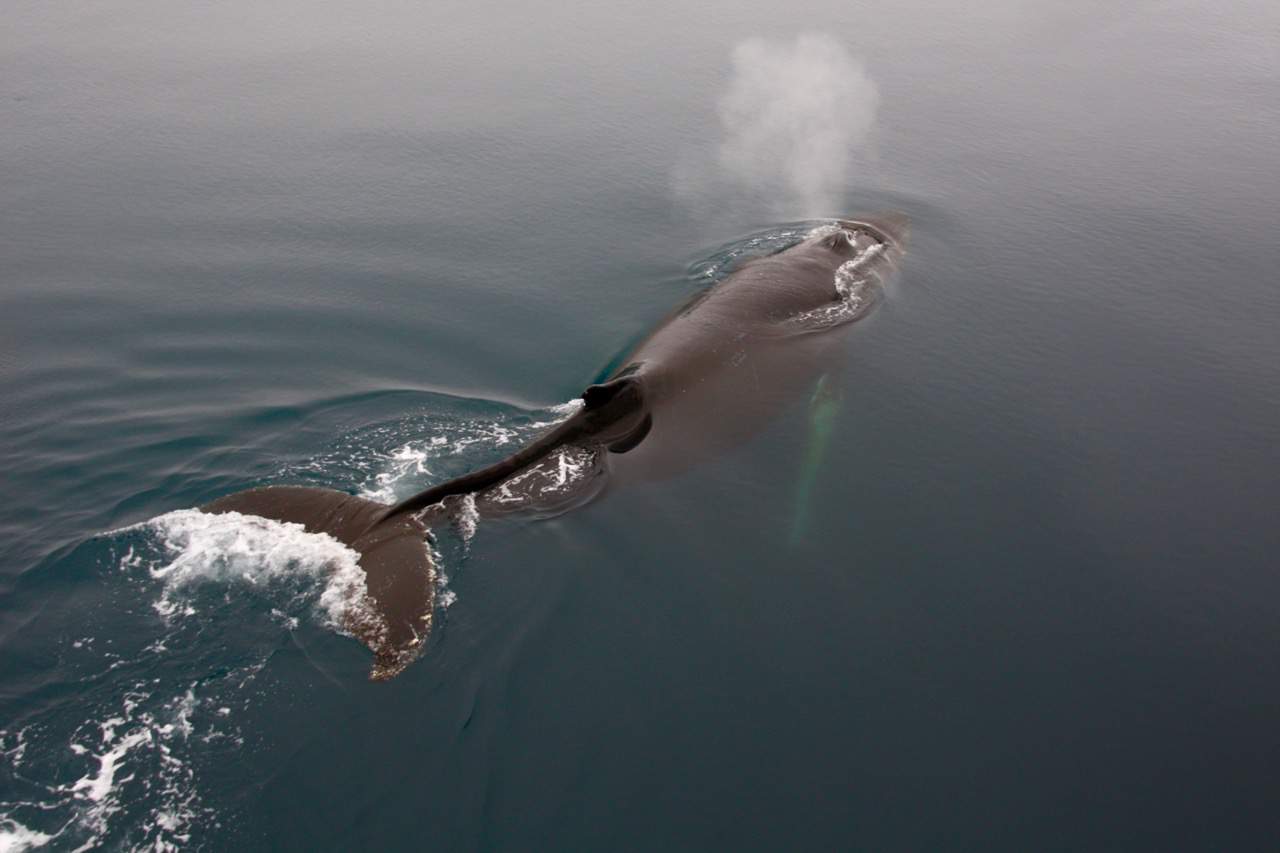
On our trip, we also lucked out with several minke encounters, exciting if fleeting moments.
Minkes were originally overlooked by early 20th century whalers in favour of their larger cousins. With the global depletion of larger whales though, they quickly became the most hunted whale of all. Sadly, loopholes in the international moratorium on whaling means these shy and beautiful mammals are still being hunted today, making a chance sighting even more special.
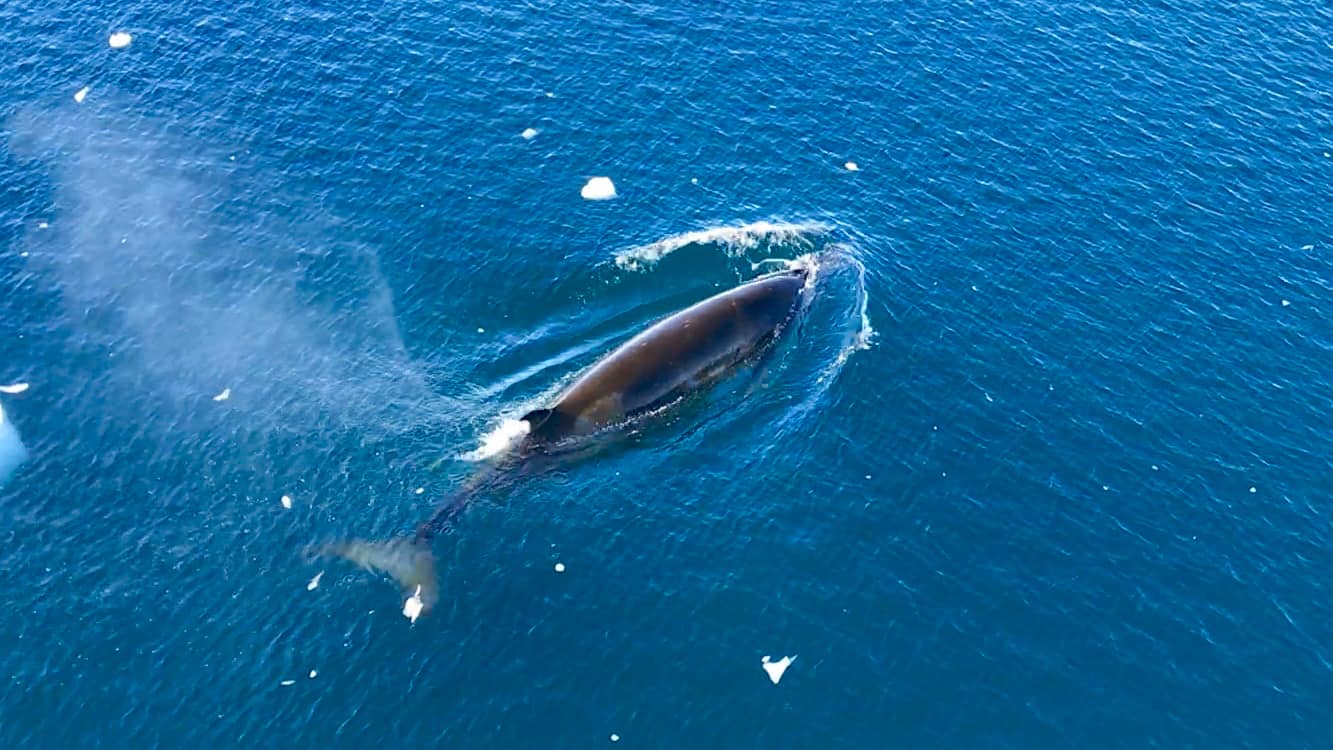
Southern right whales and orcas are also found around the Antarctic Peninsula. Despite good populations and an abundance of food favourites – like krill for the right whales, and seals and penguins for the orcas – we didn’t spot them this time around. That’s the thing about an Antarctic cruise though, there’s always a chance and you never know what you’ll get.
Watch Fur Seals Joust
Another of our Antarctic wildlife favourites, fur seal numbers have boomed with the help of the Antarctic Treaty and the Convention for the Conservation of Antarctic Seals.
Once hunted mercilessly for their pelts, these charming but feisty creatures have made a remarkable recovery, and formed a noisy welcoming committee just about everywhere we landed during our trip.
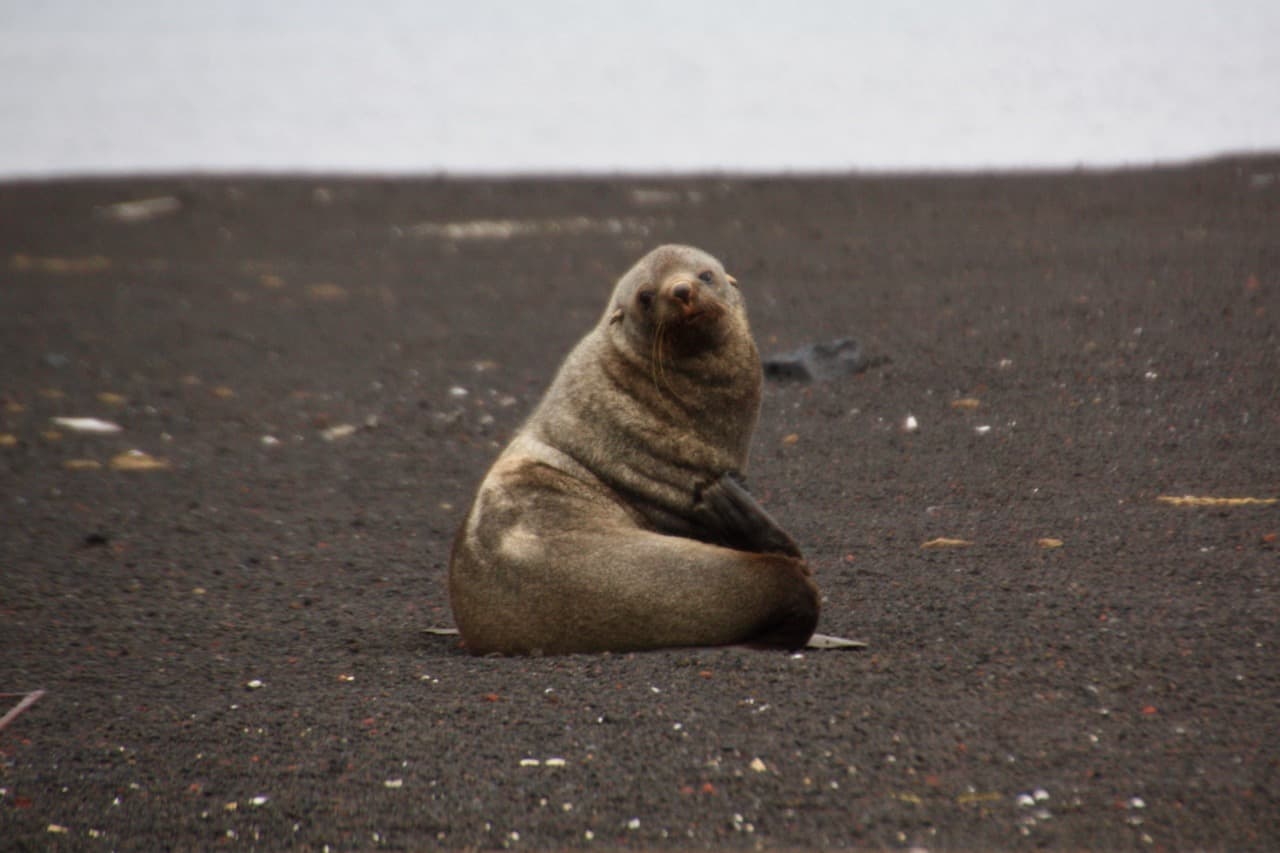
One of the most exciting fur seal encounters we had was at Whalers Bay in the South Shetland Islands, where we visited an old, abandoned whaling station that’s now home to literally hundreds of fur seals.
It was here we discovered that while these guys are certainly endearing from a zodiac boat, sharing the same piece of terra firma with them can be an interesting – sometimes hair-raising – experience.
Before setting out, we received a safety briefing reminding us that large males can exceed 200 kilos in weight, move surprisingly fast on land, and have sharp teeth in bacteria-loaded mouths. In days gone by, sealers were reported to have fingers amputated as a result of ‘sealer’s finger’, a bacterial infection caused by seal bites.
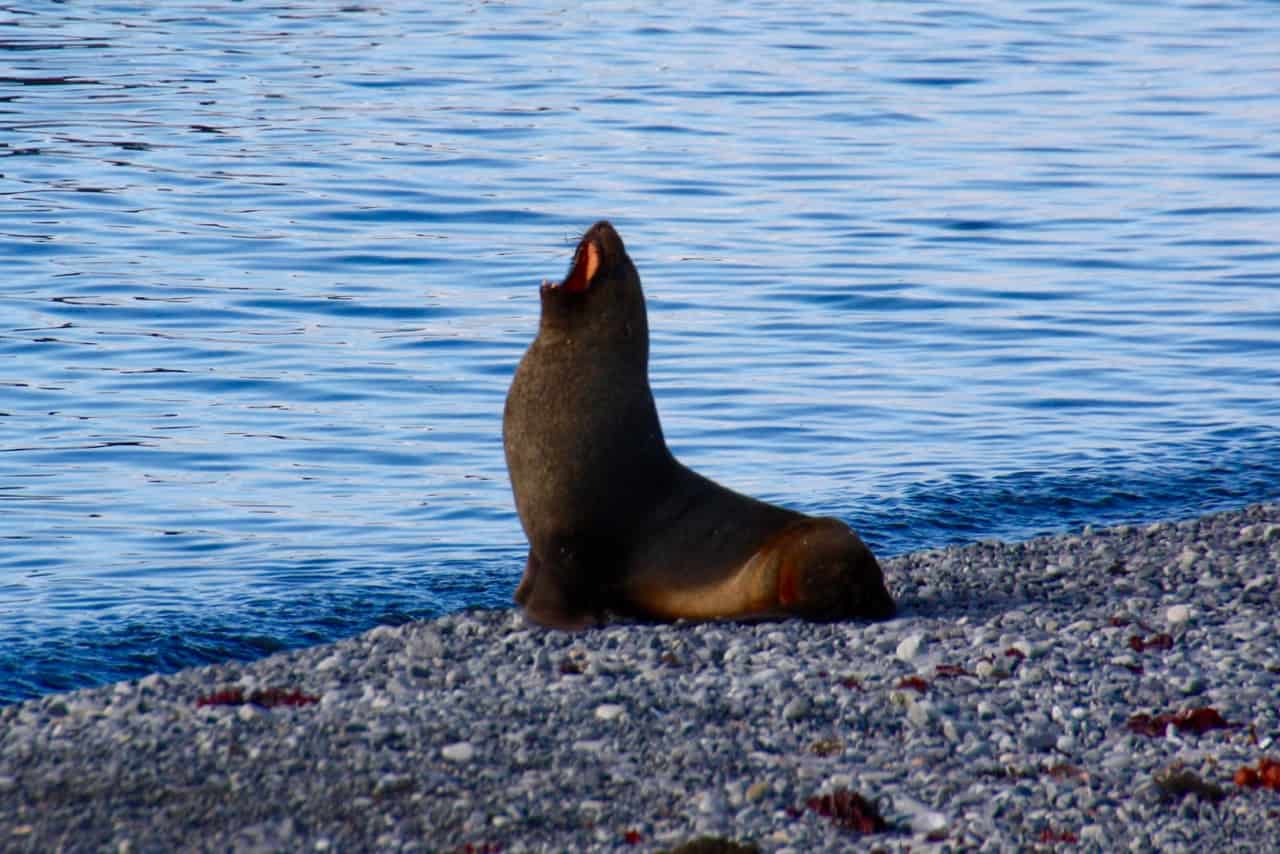
With this reality check under our belts we embarked from the zodiac at Whalers Bay with a healthy respect for our cuddly-looking companions and a mantra running through our heads: don’t get too close, don’t run away, if charged, be big and intimidating.
As it turned out, the young male fur seals hanging around the station and the beach were mostly preoccupied play-jousting with each other, prepping for their future breeding season battles over lady seals and territory.
Occasionally an unaware human would stray too close to the action though, suffering the ignominy of a fake fur seal charge and the pants-changing adrenaline rush that went with it.
Fortunately everyone arrived back on our boat unscathed though, and without a sealer’s finger in sight.
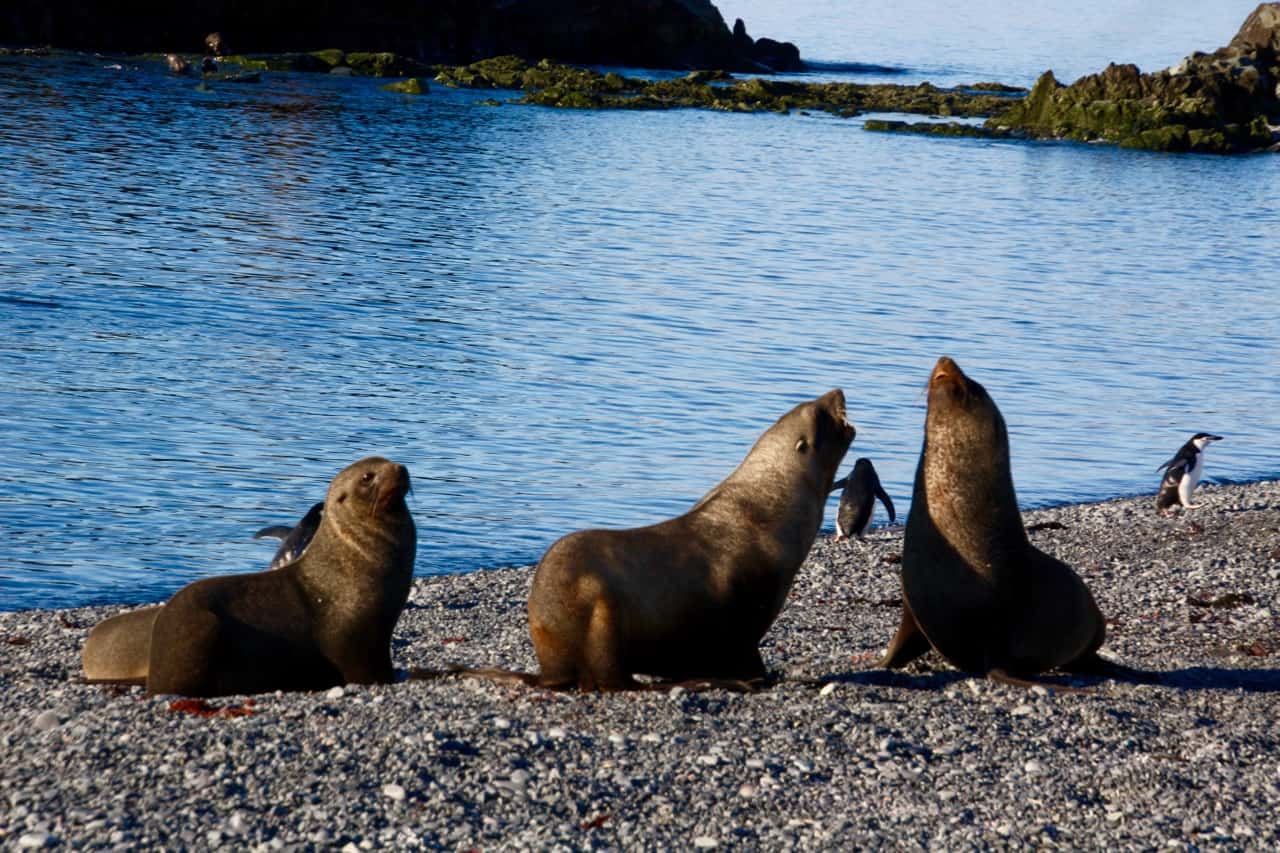
Spot The Other Seal Species
Intimidating as they can be up close, fur seals are actually the smallest of Antarctica’s six seal species, and pinniped-spotting became a favourite pastime on our expedition ship.
While fur seals were mostly seen in larger groups on land, we spotted quite a few chubby crabeater seals and the occasional weddell seal chilling out on floating platforms of ice.
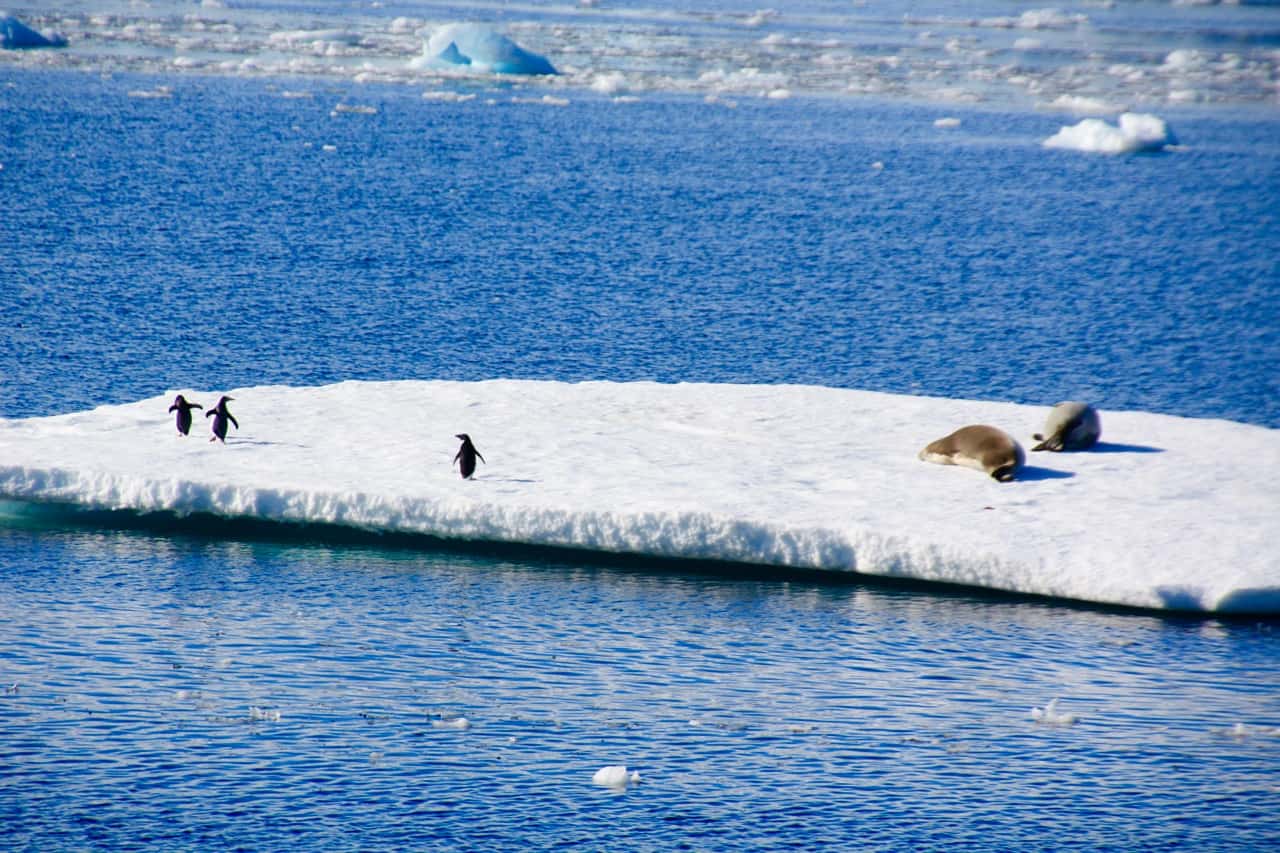
By far the most exciting encounter for us though was getting within a few metres of a mighty leopard seal.
These fearsome animals can grow to almost 4-metres long and weigh up to 600kg. While they mostly feed on krill, squid, fish and penguins, they are considered to be opportunistic hunters, and aren’t averse to hunting pretty much anything, including other seals.
This, along with their sheer size and aggression, puts them firmly at the top of the Antarctic food chain along with orcas, and the peak of our Antarctic wildlife bucket list.
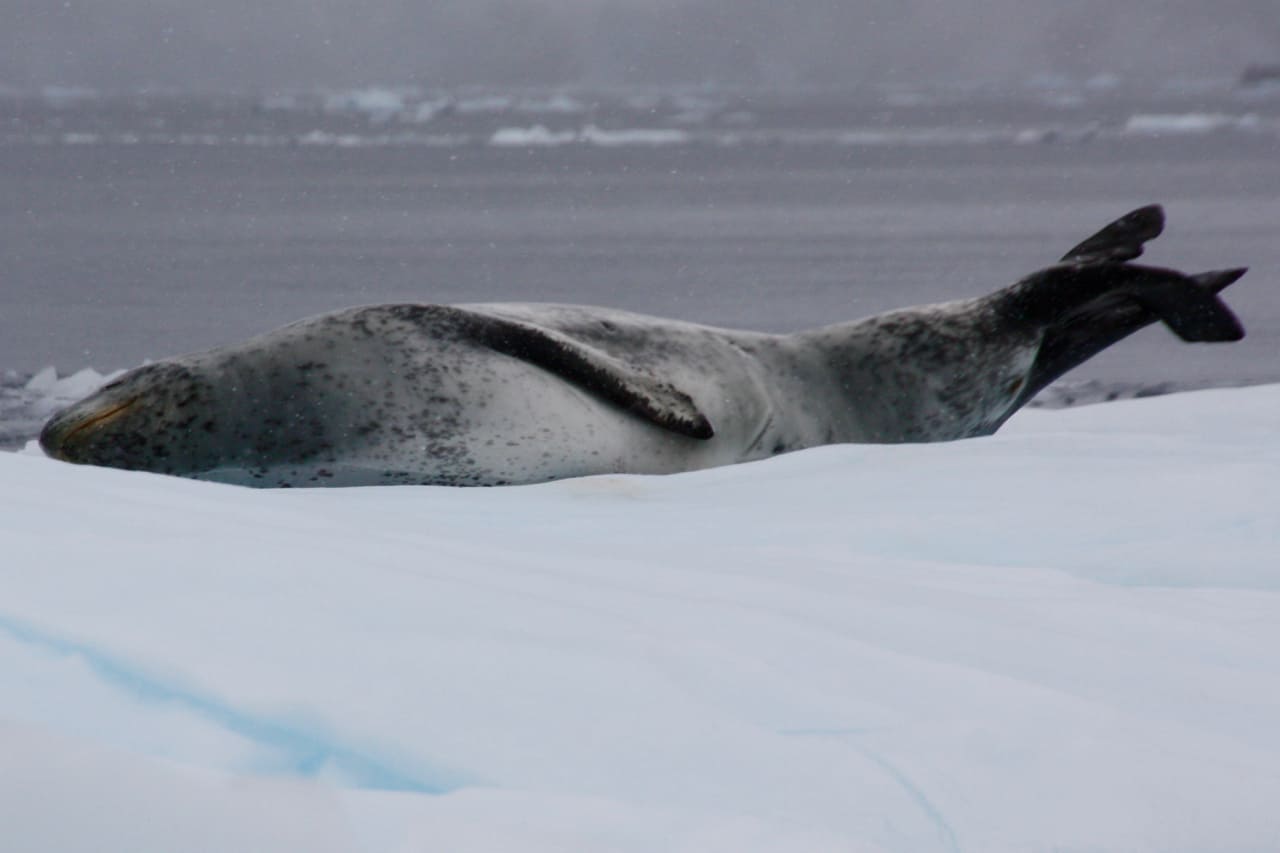
Hang Out With The World’s Cutest Birds
Whether they’re waddling along a well-trodden penguin pathway, zipping around in the ocean, climbing on rocks or just lazing about, there’s nothing cuter than a penguin. Except maybe a penguin chick.
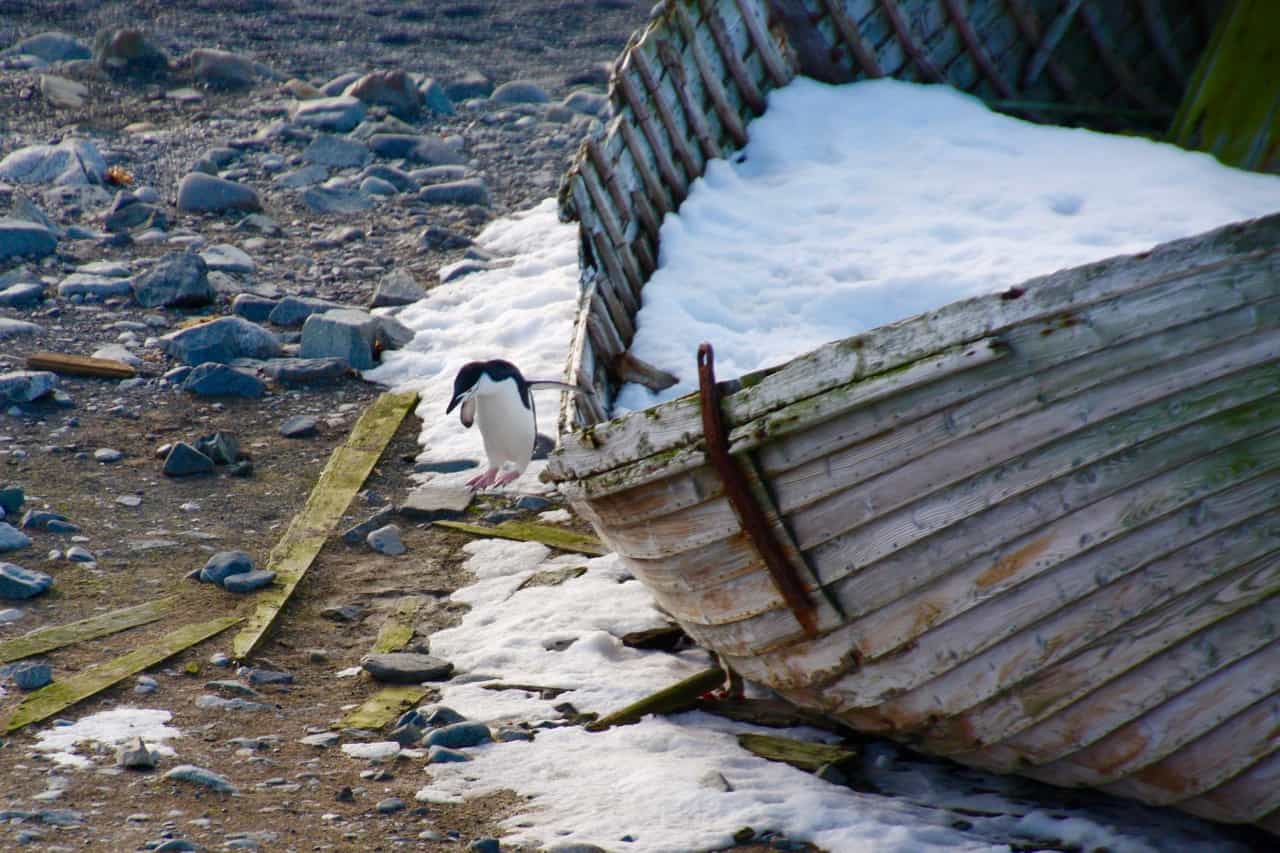
Antarctica is home to 6 of the world’s 17 penguin species. Which ones you’ll encounter will largely depend on where your Antarctic cruise travels to.
The Antarctic Peninsula and nearby islands is where gentoo, chinstrap, adélie and macaroni penguins breed over the austral summer period.
December to February are the busiest months of the breeding season but by March – when we visited the Antarctic Peninsula – most of the adult penguins have gone back to their life in the sea, leaving their ridiculously cute, hilariously clumsy offspring in the penguin colonies to molt the last of their baby feathers.
On our trip, we encountered well-fed gentoo chicks just about everywhere we visited, shaking off the last tufts of fluffy down as they geared up for a life in the freezing waters of their icy home.
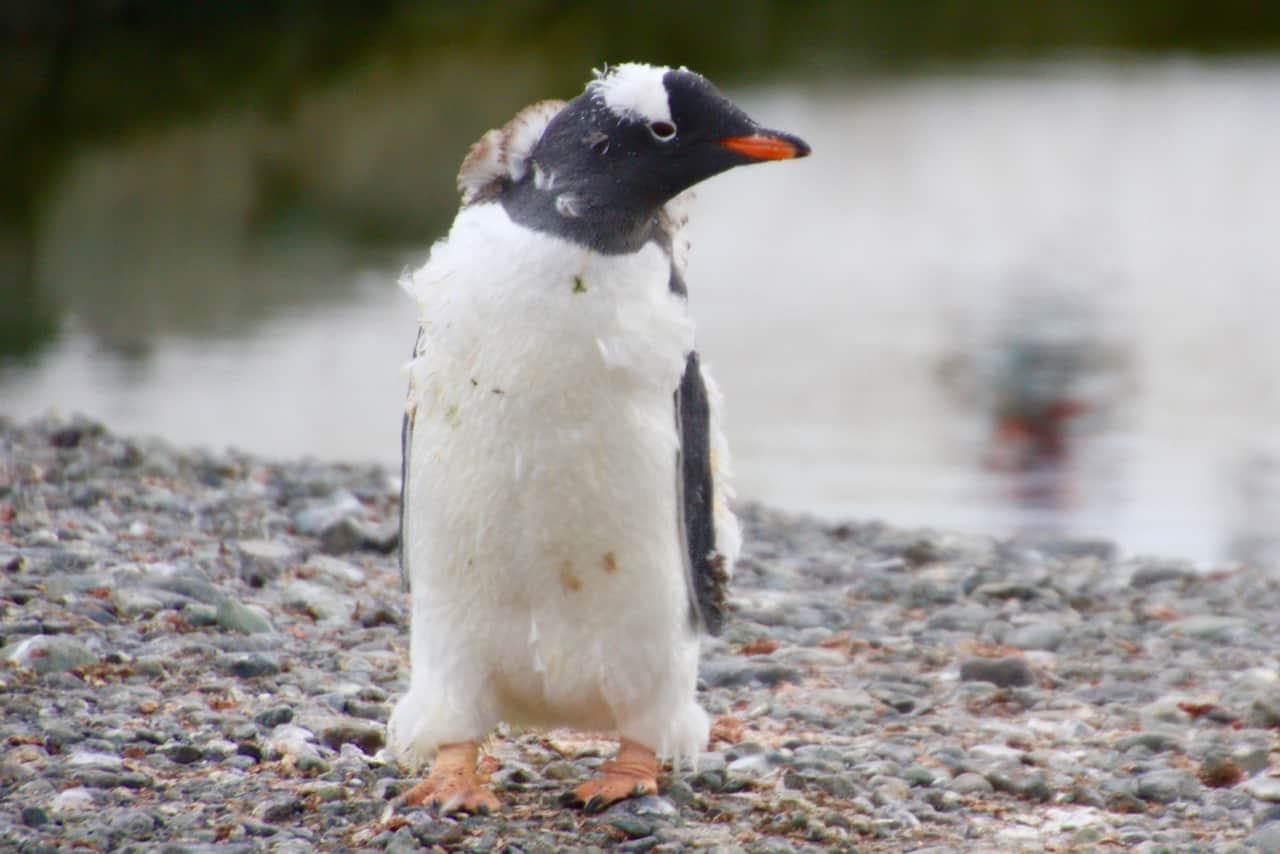
We were particularly happy to see these guys doing well as they’ve been considered Near Threatened by the International Union for Conservation of Nature (IUCN) since the turn of the century and have only recently had their status downlisted to Least Concern with a small, but stable population.
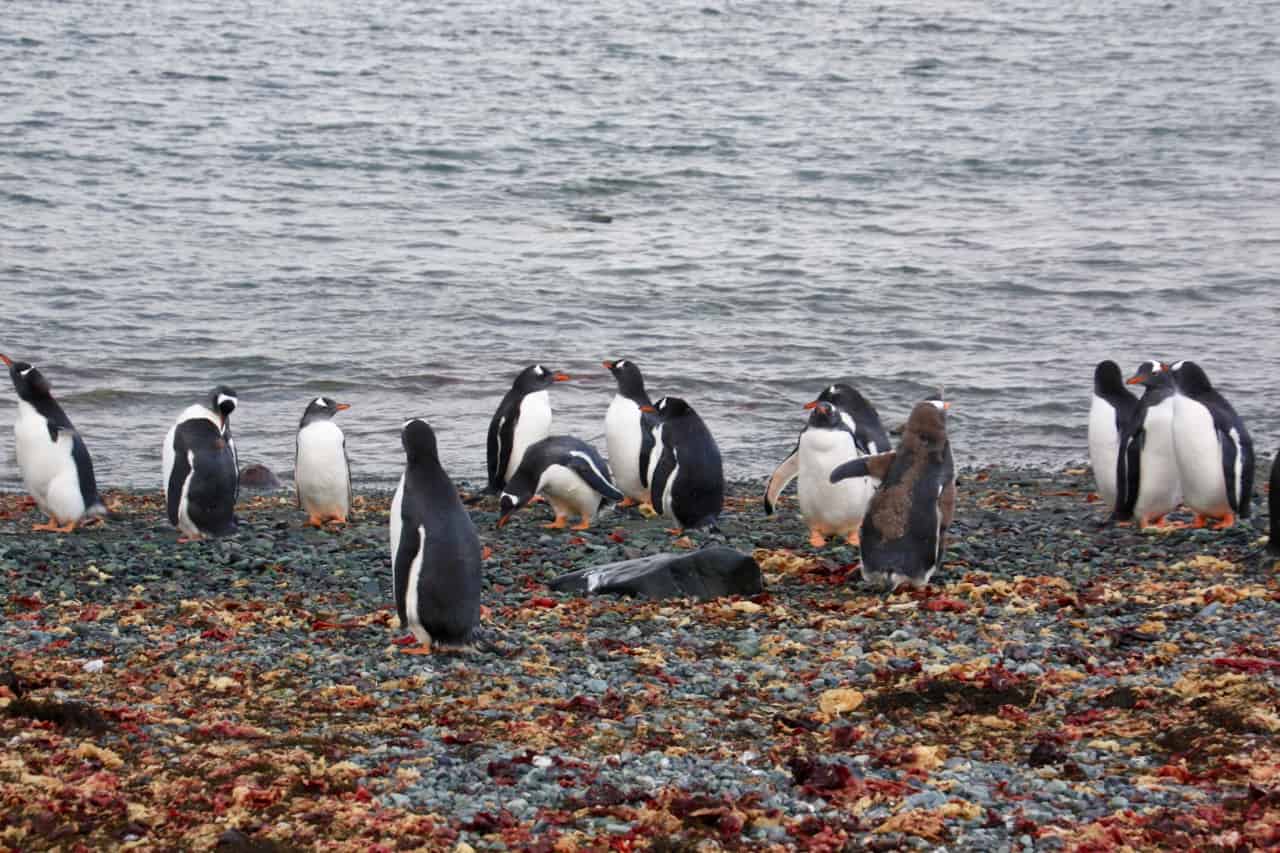
Despite a recent report suggesting there are almost 4 million more Adélie penguins than previously thought, they were scarce during our visit, with just a few late-start chicks on Petermann Island looking lonely and miserable as they waited out their molt.

My personal favourite though turned out to be the chinstrap penguin. Maybe it’s because they were the first Antarctic wildlife we encountered up close, or perhaps it’s just their cool helmet-and-strap feather pattern.
Whether leaping off old whale boats or parading along penguin highways though, these cute characters kept us entertained for hours.
Our eyes were peeled throughout our visit for a glimpse of the continent’s most famous penguin inhabitant: the emperor. These guys tend to congregate in the Weddell Sea though, on the eastern side of the Antarctic Peninsula, so no sightings for us. Just one more reason to visit Antarctica again one day.
Twitch For The Penguin’s Flying Cousins
I’m the first to admit that birds of the flying, non-penguin variety weren’t even remotely on my Antarctic wildlife radar when we were planning our visit to Antarctica.
It was while hanging around the stern deck of our expedition ship after two days on the open seas, that I was suddenly clued in to the birders’ paradise ahead with the arrival of an entourage of ocean-going species gliding in the air currents behind the ship.
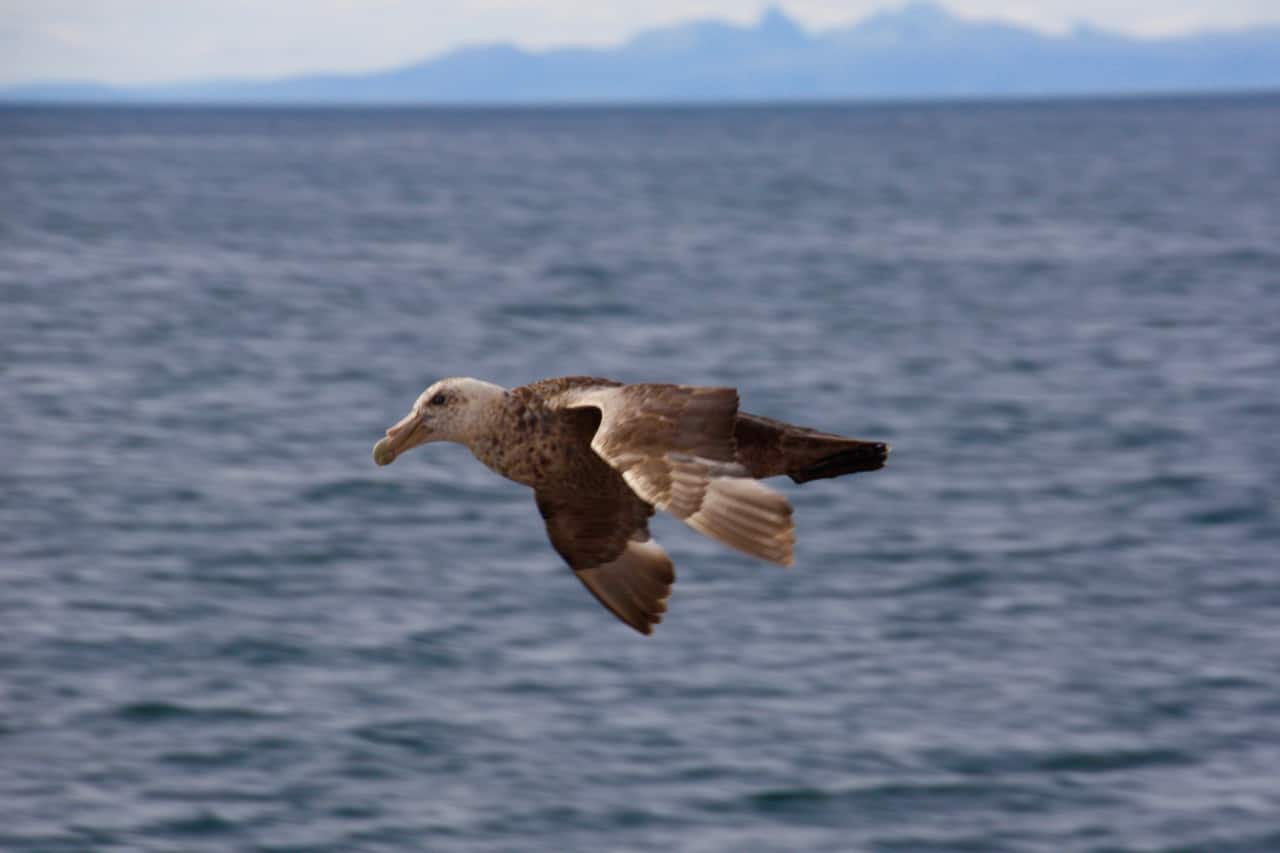
With around a hundred million birds of more than 45 species breeding on or around the southern continent each year, this corner of the world will keep even the most twitchy of twitchers happy. Dan, a bird nerd from way back, was in her element.
Out on the open sea, we mainly encountered pelagic species like albatross and giant petrels, their larger size and wingspan giving them a far superior range to many other species. There are 23 species of petrels alone in Antarctica, and six species of albatross.
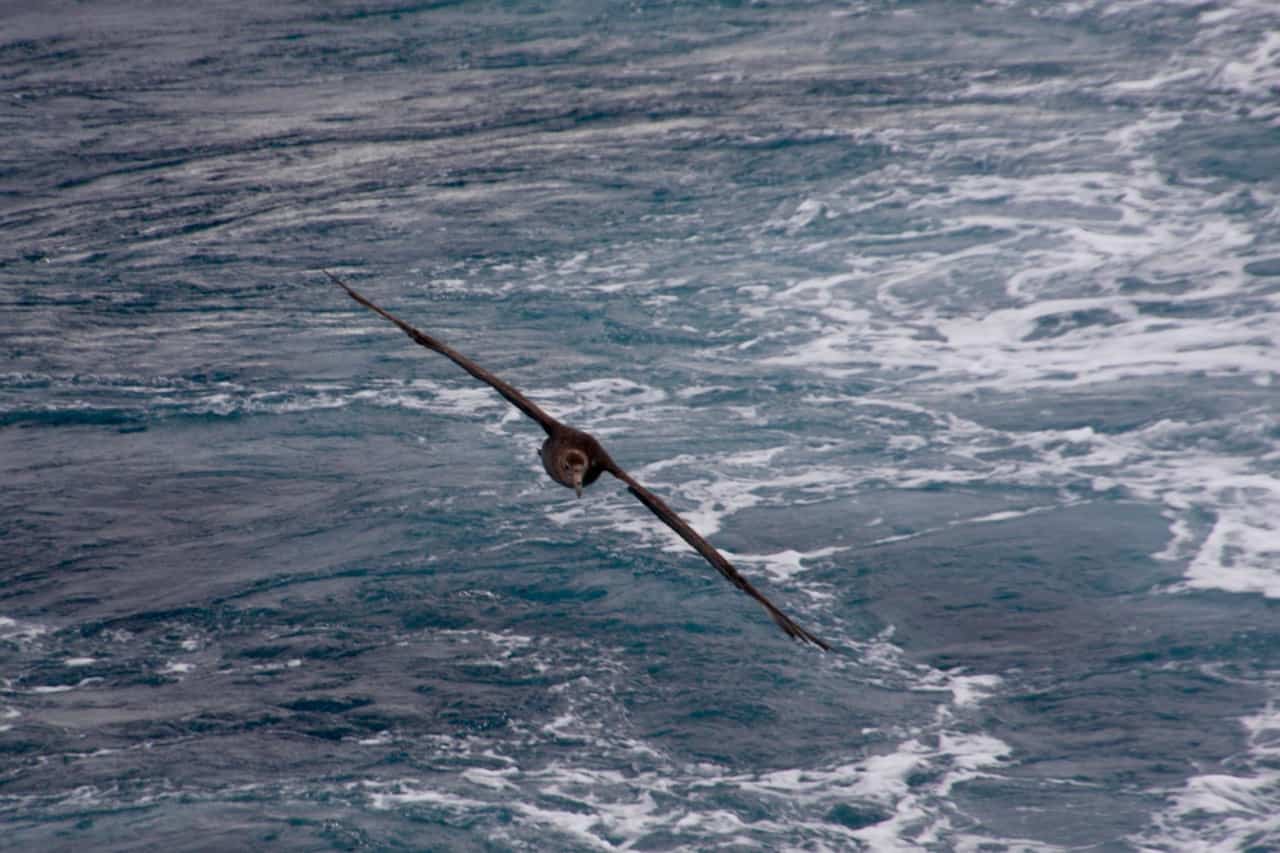
Once we reached the South Shetlands and began traversing the islands off the Antarctic Peninsula, the abundance of birds, both great and small, increased dramatically.
Skuas were a common sight during our landings. Nicknamed the ‘raptors of the south’, these predatory birds are frequently portrayed as the arch villain in wildlife documentaries thanks to their tendency to nest near penguin colonies in order to steal eggs and pick off any stray chicks or injured birds.
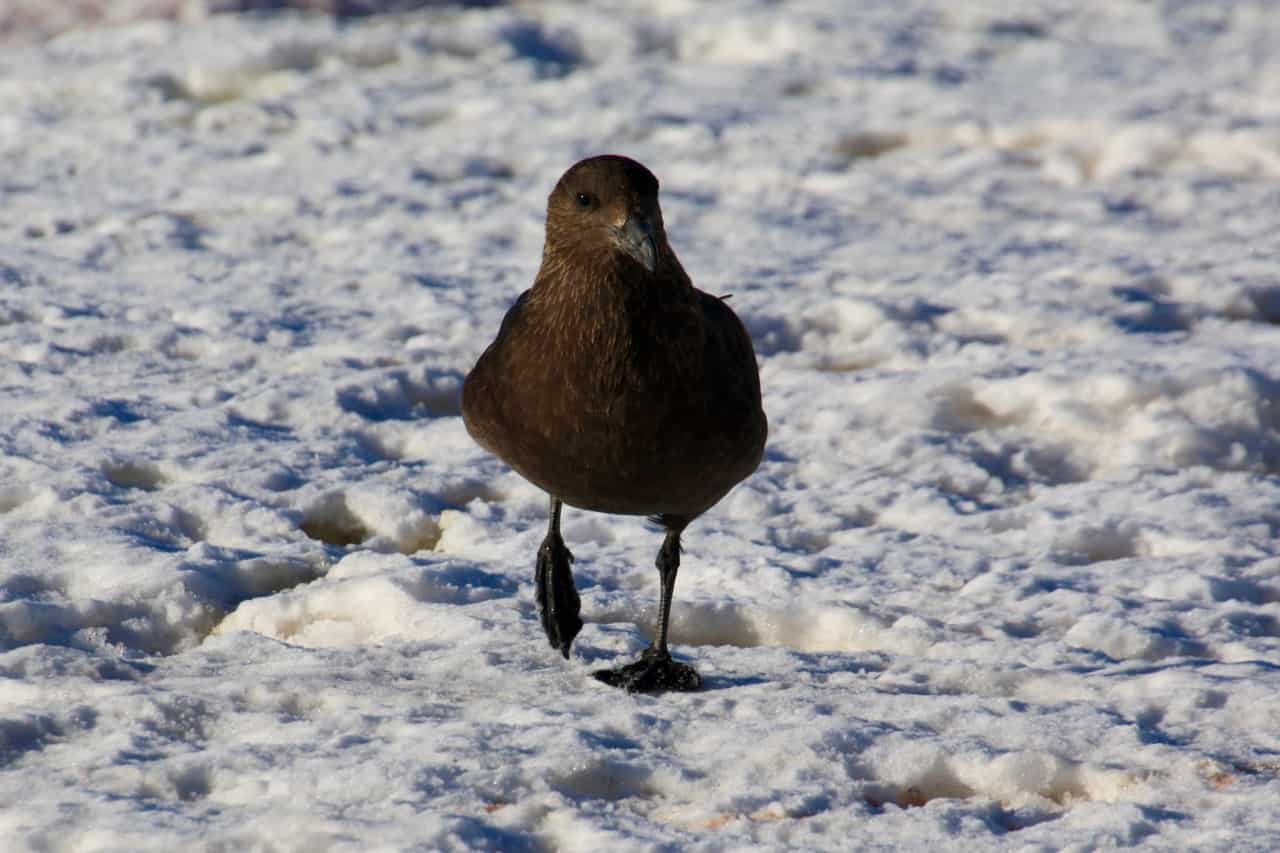
We also encountered one of Antarctica’s few permanent residents at spectacular Paradise Bay: the striking blue eyed shag.
Nesting here in large numbers, the birds fished around our zodiacs, diving time and again into a bay slowly icing up with the approach of winter. Excellent hunters, these impressive birds can dive more than a hundred metres in search of dinner.
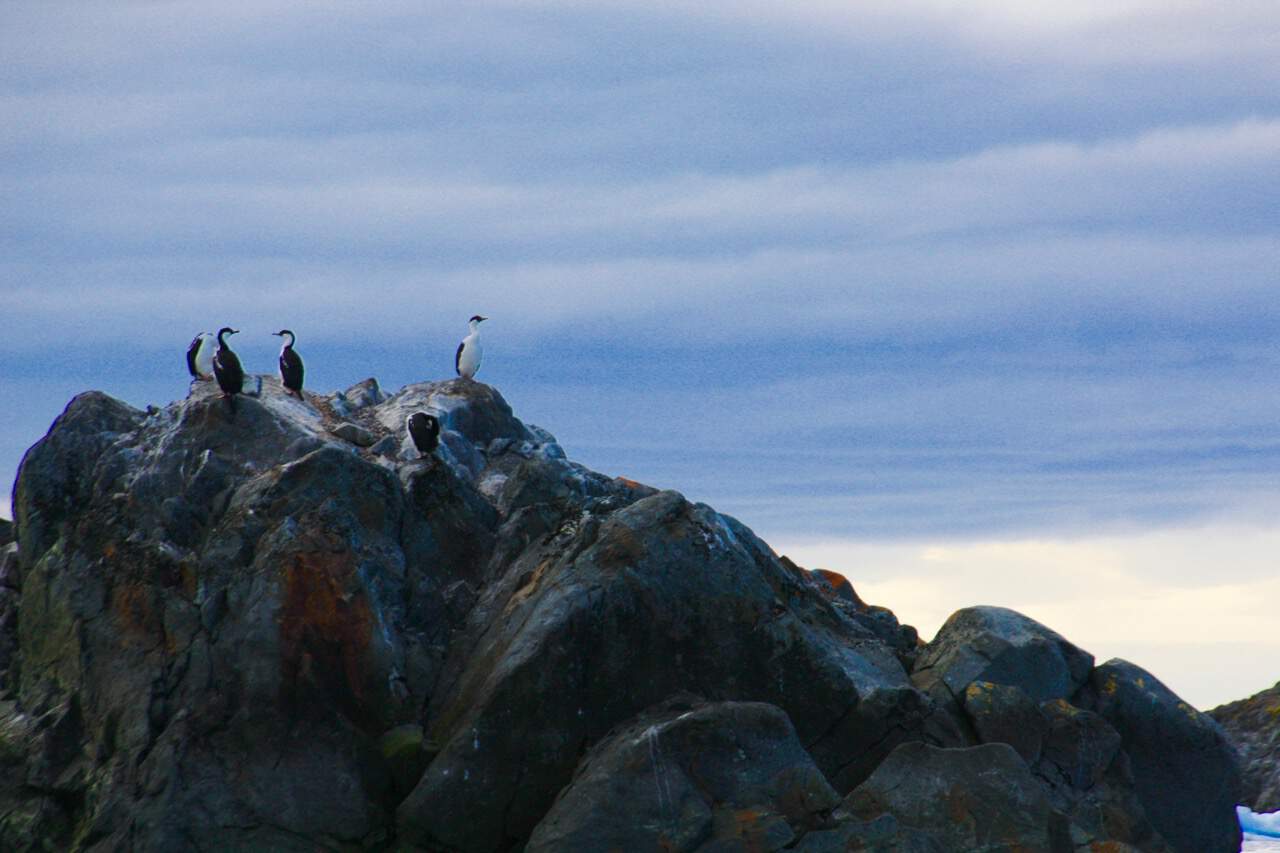
Much less common (though I’m fairly certain I saw one…sadly, no photographic evidence), is the beautiful snow petrel, another of Antarctica’s permanent residents.
We do have photographic evidence however of the numerous fish-hunting Antarctic terns and scavenging snow sheathbills we encountered, all of them tough little birds evolved to withstand the harsh conditions of the frozen continent.
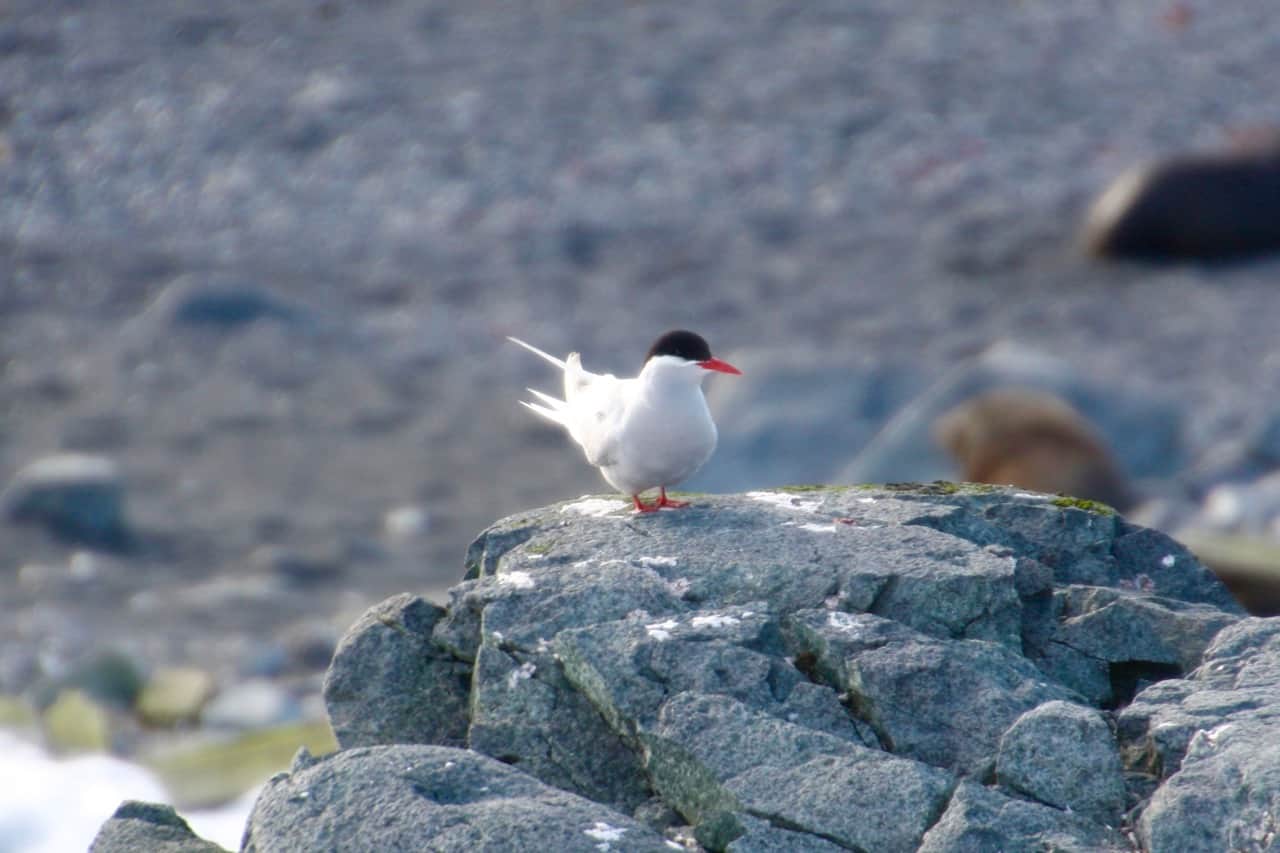
A pretty Antarctic tern stays still long enough for a photo.
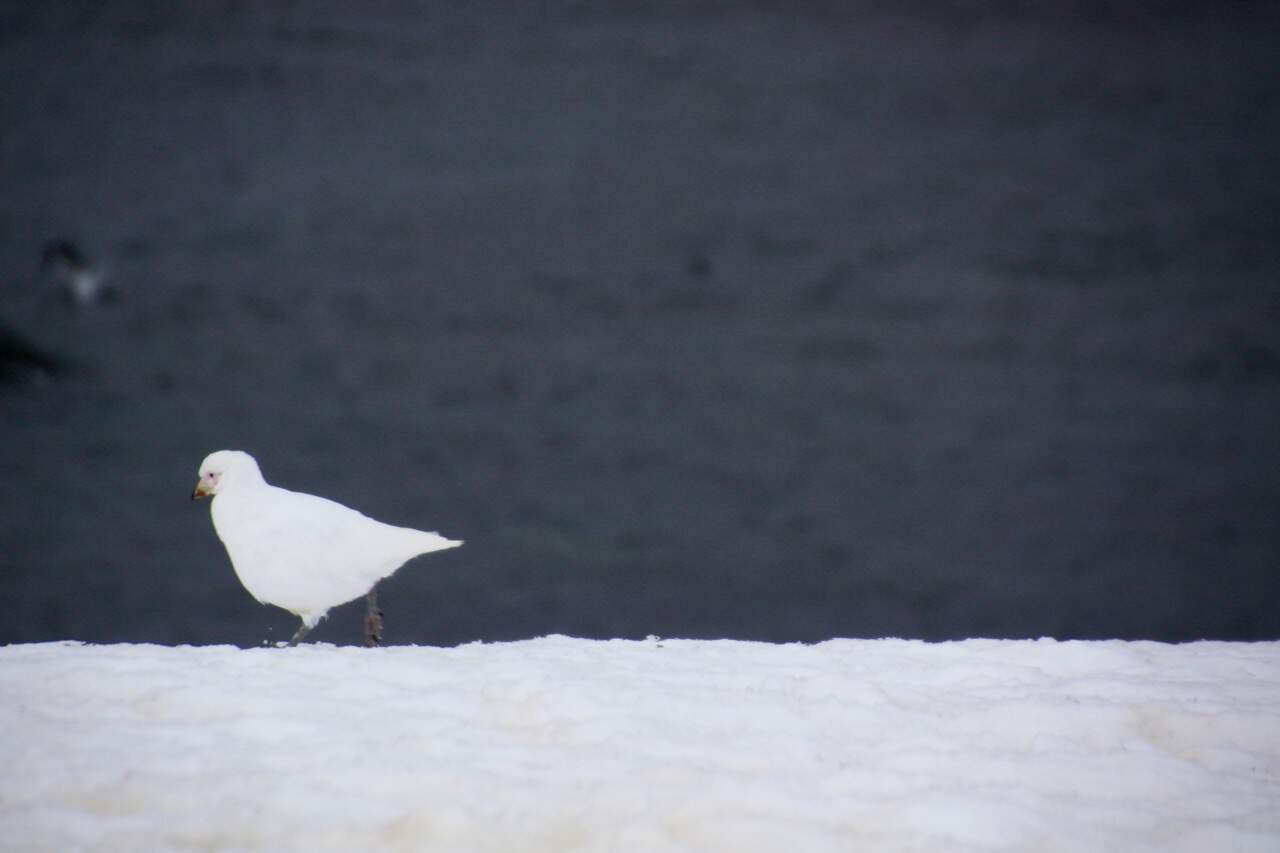
At the end of the day, every trip to Antarctica is different, and the wildlife you encounter will vary from day to day and destination to destination. If you’re keen for a particular Antarctic wildlife experience, then be sure to research where best to go and when. No matter what animals you see though, a journey to Antarctica will be a trip you’ll never forget.
Want to know more about planning a trip to Antarctica and what it’s like to visit? Check out our collection of Antarctica posts. If you’ve got any questions, hit us up below!
